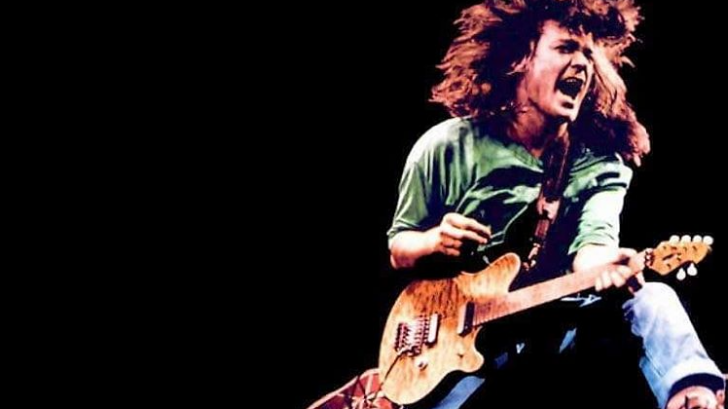There is no doubt that the band Van Halen, created by brothers Eddie and Alex Van Halen in 1972, has a special place in the history of rock in the world. And especially Eddie, who from the guitar impacted the sound of an entire generation, creating athenms like Jump, Panama, Runnin’ With the Devil or Dance the Night Away.
Eddie Van Halen passed away in Santa Monica on October 6, 2020 after battling neck cancer for a decade. However, despite his illness, the guitarist was passionate about music and never stopped giving concerts and delighting his fans with epic chords, riffs and solos.
It’s hard to imagine what rock & roll would sound like without him. Like Jimi Hendrix, Jimmy Page and Eric Clapton, Eddie Van Halen changed the vocabulary of the guitar for more than a generation. The pyrotechnic tapping style, harmonic booms and melodic explosions redefined the guitar solo and inspired legions of guitarists. Whatever they played, they did it with their hearts.
Beat It
Steve Lukather, from Toto, was the lead guitarist on Thriller, Michael Jackson’s record that marked an era. But when it came time to record the solo for “Beat It,” producer Quincy Jones had only one musician in mind: Eddie Van Halen.
I’m the One
The same month that Van Halen came out, a young Eddie was asked in one of his first interviews if there were any solos that he thought stood out on the album. “I like ‘I’m the One,’ the boogie,” he replied. It’s not hard to see why. “Eruption” may be Van Halen’s ultimate guitar glory, but when it comes to more outlandish six-string madness, “I’m the One” is superior.
Hot For Teacher
“‘We were in a room playing together and I kind of winked at the guys and said, ‘Okay, we’re changing now!’ Because I don’t count, I just follow my feelings. I tend to do a lot of things in threes and fives, instead of fours.,” Eddie Van Halen told Guitar World. The generally subtle guitarist isn’t bragging but telling the truth; this is top-notch stuff, from the moment Alex Van Halen walks in with the track’s already iconic drum arrangement to five minutes later, when the track reaches its gonzo ending.
Mean Street
Along with the last 45 seconds of “Eruption,” the first 30 of “Mean Street” (in which Eddie unleashes a kind of “funk slap” version of his two-handed tapping) contains perhaps the most imitated vanhalenism of budding guitarists. (and, apparently, also by prominent keyboardists). Which sometimes obscures the fact that the solo proper on “Mean Street” is also a fire.
Panama
Considering the level of sexual innuendo in the lyrics, a casual listener might think that “Panama,” the third single from Van Halen’s 1984 album, was inspired by a night of lust backstage in Central America. But it’s actually about a car; not “California Girl,” David Lee Roth’s highly tuned 1951 Mercury featured in the hilariously disjointed “Panama” video, but “Panama Express,” a race car that once caught the singer’s eye on a competition in Las Vegas. Eddie Van Halen’s solo is appropriately up-tempo, with Chuck Berry-esque double stops speeding up to a series of dizzying tapping arrangements.
Eruption
Go to YouTube and write “Eruption Cover”; you’re going to find 12-year-olds breaking it by doing Eddie’s classic one-minute, 42-second solo with pinpoint accuracy. Which says less about the difficulty of the instrumental piece (which was originally part of Eddie’s warm-up regimen for shows) than about its status as the standard of modern music.
In fact, it wouldn’t be an exaggeration to say that there are pre-“Eruption” guitar solos and then there’s what came after (for example the entire 80’s). The first half of the song is all triad chords and high-speed shredding (with an homage to Cactus’ 1970s boogie rock “Let Me Swim”), but then Ed drops a bombshell: a cascade of triads that he plays along with. a two-handed tapping (“as if he had a sixth finger on his left hand,” he said) that are so electrifying, so vital, that it’s as if you’re watching him build a bridge to the future of guitar playing in real time.

